Posts Tagged: reality
Hitting the Books: The thirty-year quest to make WiFi a connectivity reality
The modern world of consumer tech wouldn’t exist as we know it if not for the near-ubiquitous connectivity that Wi-Fi internet provides. It serves as the wireless link bridging our mobile devices and smart home appliances, enabling our streaming entertainment and connecting us to the global internet.
In his new book, Beyond Everywhere: How Wi-Fi Became the World’s Most Beloved Technology, Greg Ennis, who co-authored the proposal that became the technical basis for WiFi technology before founding the Wi-Fi Alliance and serving as its VP of Technology for a quarter century, guides readers on the fascinating (and sometimes frustrating) genesis of this now everyday technology. In the excerpt below, Ennis recounts the harrowing final days of pitching and presentations before ultimately convincing the IEEE 802.11 Wireless LAN standards committee to adopt their candidate protocol as well as examine the outside influence that Bob Metcalf — inventor of both Ethernet, the standard, and 3Com, the tech company — had on Wi-Fi’s eventual emergence.
Excerpted from Beyond Everywhere: How Wi-Fi Became the World’s Most Beloved Technology (c) 2023 by Greg Ennis. Published by Post Hill Press. Used with permission.
With our DFWMAC foundation now chosen, the work for the IEEE committee calmed down into a deliberate process for approving the actual text language for the standard. There were still some big gaps that needed to be filled in—most important being an encryption scheme—but the committee settled into a routine of developing draft versions of the MAC sections of the ultimate standard document. At the January 1994 meeting in San Jose, I was selected to be Technical Editor of the entire (MAC+PHY) standard along with Bob O’Hara, and the two of us would continue to serve as editors through the first publication of the final standard in 1997.
The first draft of the MAC sections was basically our DFWMAC specification reformatted into the IEEE template. The development of the text was a well-established process within IEEE standards committees: as Bob and I would complete a draft, the members of the committee would submit comments, and at the subsequent meeting, there would be debates and decisions on improvements to the text. There were changes made to the packet formats, and detailed algorithmic language was developed for the operations of the protocol, but by and large, the conceptual framework of DFWMAC was left intact. In fact, nearly thirty years after DFWMAC was first proposed, its core ideas continue to form the foundation for Wi-Fi.
While this text-finalization process was going on, the technology refused to stand still. Advances in both radio communications theory and circuit design meant that higher speeds might be possible beyond the 2-megabit maximum in the draft standard. Many companies within the industry were starting to look at higher speeds even before the original standard was finally formally adopted in 1997. Achieving a speed greater than 10 megabits — comparable to standard Ethernet — had become the wireless LAN industry’s Holy Grail. The challenge was to do this while staying within the FCC’s requirements — something that would require both science and art.
Faster is always better, of course, but what was driving the push for 10 megabits? What wireless applications were really going to require 10-megabit speeds? The dominant applications for wireless LANs in the 1990s were the so-called “verticals” — for example, Symbol’s installations that involved handheld barcode scanners for inventory management. Such specialized wireless networks were installed by vertically integrated system providers offering a complete service package, including hardware, software, applications, training, and support, hence the “vertical” nomenclature. While 10-megabit speeds would be nice for these vertical applications, it probably wasn’t necessary, and if the cost were to go up, such speeds wouldn’t be justifiable. So instead, it would be the so-called “horizontal” market — wireless connectivity for general purpose computers — that drove this need for speed. In particular, the predominantly Ethernet-based office automation market, with PCs connected to shared printers and file servers, was seen as requiring faster speeds than the IEEE standard’s 2 megabits.
Bob Metcalfe is famous in the computer industry for three things: Ethernet, Metcalfe’s Law, and 3Com. He co-invented Ethernet; that’s simple enough and would be grounds for his fame all by itself. Metcalfe’s Law— which, of course, is not actually a law of physics but nonetheless seems to have real explanatory power— states that the value of a communication technology is proportional to the square of the number of connected devices. This intuitively plausible “law” explains the viral snowball effect that can result from the growing popularity of a network technology. But it would be Metcalfe’s 3Com that enters into our Wi-Fi story at this moment.
Metcalfe invented Ethernet while working at PARC, the Xerox Palo Alto Research Center. PARC played a key role in developing many of the most important technologies of today, including window-based graphic computer interfaces and laser printing, in addition to Ethernet. But Xerox is famous for “Fumbling the Future,” also the title of a 1999 book documenting how “Xerox invented, then ignored, the first personal computer,” since the innovations developed at PARC generally ended up being commercialized not by Xerox but by Apple and others. Not surprisingly, Metcalfe decided he needed a different company to take his Ethernet invention to the market, and in 1979, he formed 3Com with some partners.
This was the same year I joined Sytek, which had been founded just a couple of months prior. Like 3Com, Sytek focused on LAN products, although based on broadband cable television technology in contrast to 3Com’s Ethernet. But whereas Sytek concentrated on hardware, 3Com decided to also develop their own software supporting new LAN-based office applications for shared PC access to data files and printers. With these software products in combination with their Ethernet technology, 3Com became a dominant player in the booming office automation market during the nineties that followed the introduction of personal computers. Bob Metcalfe was famously skeptical about wireless LANs. In the August 16, 1993, issue of InfoWorld, he wrote up his opinion in a piece entitled “Wireless computing will flop — permanently”:
This isn’t to say there won’t be any wireless computing. Wireless mobile computers will eventually be as common as today’s pipeless mobile bathrooms. Porta-potties are found on planes and boats, on construction sites, at rock concerts, and other places where it is very inconvenient to run pipes. But bathrooms are still predominantly plumbed. For more or less the same reasons, computers will stay wired.
Was his comparison of wireless to porta-potties just sour grapes? After all, this is coming from the inventor of Ethernet, the very archetype of a wired network. In any event, we were fortunate that Metcalfe was no longer involved with 3Com management in 1996 — because 3Com now enters our story as a major catalyst for the development of Wi-Fi.
3Com’s strategy for wireless LANs was naturally a subject of great interest, as whatever direction they decided to take was going to be a significant factor in the market. As the premier Ethernet company with a customer base that was accustomed to 10-megabit speeds, it was clear that they wouldn’t take any steps unless the wireless speeds increased beyond the 2 megabits of the draft IEEE standard. But might they decide to stay out of wireless completely, like Bob Metcalfe counselled, to focus on their strong market position with wired Ethernet? And if they did decide to join the wireless world, would they develop their own technology to accomplish this? Or would they partner with an existing wireless developer? The task of navigating 3Com through this twisted path would fall to a disarmingly boyish business development whiz named Jeff Abramowitz, who approached me one afternoon quite unexpectedly.
Jeff tapped me on the shoulder at an IEEE meeting. “Hey, Greg, can I talk with you for a sec?” he whispered, and we both snuck quietly out of the meeting room. “Just wondering if you have any time available to take on a new project.” He didn’t even give me a chance to respond before continuing with a smile: “10 megabits. Wireless Ethernet.” The idea of working with the foremost Ethernet company on a high-speed version of 802.11 obviously enticed me, and I quickly said, “Let’s get together next week.”
He told me that they had already made some progress towards an internally developed implementation, but that in his opinion, it was more promising for them to partner with one of the major active players. 3Com wanted to procure a complete system of wireless LAN products that they could offer to their customer base, comprising access points and plug-in adapters (“client devices”) for both laptops and desktops. There would need to be a Request for Proposal developed, which would, of course, include both technical and business requirements, and Jeff looked to me to help formulate the technical requirements. The potential partners included Symbol, Lucent, Aironet, InTalk, and Harris Semiconductor, among others, and our first task was to develop this RFP to send out to these companies.
Symbol should need no introduction, having been my client and having played a major role in the development of the DFWMAC protocol that was selected as the foundation for the 802.11 standard. Lucent may sound like a new player, but in fact, this is simply our NCR Dutch colleagues from Utrecht — including Wim, Cees, Vic, and Bruce — under a new corporate name, NCR having been first bought by AT&T and then spun off into Lucent. Aironet is similarly an old friend under a new name — back at the start of our story, we saw that the very first wireless LAN product approved by the FCC was from a Canadian company called Telesystems, which eventually was merged into Telxon, with Aironet then being the result of a 1994 spinoff focusing on the wireless LAN business. And in another sign of the small-world nature of the wireless LAN industry at this time, my DFWMAC co-author, Phil Belanger, had moved from Xircom to Aironet in early 1996.
The two companies here who are truly new to our story are InTalk and Harris. InTalk was a small startup founded in 1996 in Cambridge, England (and then subsequently acquired by Nokia), whose engineers were significant contributors to the development of the final text within the 802.11 standard. Harris Corporation was a major defense contractor headquartered in Melbourne, Florida, who leveraged their radio system design experience into an early wireless LAN chip development project. Since they were focused on being a chip supplier rather than an equipment manufacturer, we didn’t expect them to submit their own proposal, but it was likely that other responders would incorporate their chips, so we certainly viewed them as an important player.
Over the first couple of months in 1997, Jeff and I worked up a Request for Proposal for 3Com to send out, along with a 3Com engineer named David Fisher, and by March we were able to provide the final version to various candidate partners. Given 3Com’s position in the general LAN market, the level of interest was high, and we indeed got a good set of proposals back from the companies we expected, including Symbol, Lucent, InTalk, and Aironet. These companies, along with Harris, quickly became our focus, and we began a process of intense engagement with all of them over the next several months, building relationships in the process that a year later would ultimately lead to the formation of the Wi-Fi Alliance.
Bob Metcalfe’s wireless skepticism had been soundly rejected by the very company he founded, with 3Com instead adopting the mantle of wireless evangelism. And Wireless Ethernet, soon to be christened Wi-Fi, was destined to outshine its wired LAN ancestor.
This article originally appeared on Engadget at https://www.engadget.com/hitting-the-books-beyond-everywhere-greg-ennis-post-hill-press-143010153.html?src=rss
Engadget is a web magazine with obsessive daily coverage of everything new in gadgets and consumer electronics
Apple’s mixed reality headset could feature full-body FaceTime avatars
Apple is expected to reveal its long-anticipated mixed reality headset in the coming months. The device has been in the works for several years and it'll be Apple's first new product category since Apple Watch, which debuted in 2015. Many details about the device have emerged through the rumor mill. Although much of the information in his latest piece on the headset has already been reported, Bloomberg's Mark Gurman has revealed some more details about what to expect from the product, which may be called Reality Pro.
It's said to be a standalone device with an interface similar to that of iPhone and iPad and the option to pin widgets to the home screen. Alternatively, it may be used as an external display for a connected Mac. Along with Siri voice commands, there'll be the option to use a Mac, iPhone or iPad keyboard to enter text on the so-called "xrOS" operating system, according to the report. Apple is believed to be working on a way for users to type with their hands in midair, like in many sci-fi movies, but that option likely won't be available when the headset debuts.
It's expected that there will be health-tracking features and the option to install third-party apps. Virtual reality video is said to be a focus, with the company adding support for Apple TV+ content. It's believed that Apple has held talks with Disney, Dolby and other media partners regarding VR content, and that there will be the option to watch video on virtual screens in environments like space or a desert. Users might need to wear AirPods or other supported headphones for spatial audio if they want to be fully immersed. Gaming may be an important aspect of the device as well.
The key selling point for the headset could be Apple's approach to hand and eye tracking. It's believed that the device will have sensors that can follow wearers' eyes and several external cameras that can monitor hand movements. The idea, according to the report, is that users would be able to select an item (such as an app icon or button) by looking at it and then squeezing their thumb and index finger to carry out that action. If this approach works as expected, wearers wouldn't need to use hand controllers — rival headsets typically require those. Meanwhile, the headset may have a screen on the front that can display the wearer's eyes, which might be a little offputting for some.
The device is expected to support virtual reality and augmented reality, with the ability to switch between the two modes using a Watch-like digital crown. Meta's latest headset, the Quest Pro, offers full-color passthrough for AR use and it's expected that Apple will offer a similar function.
Apple may be keeping users who need prescription glasses in mind. Many glasses wearers have found it uncomfortable to wear VR and AR headsets. However, it's claimed that Apple will offer custom lenses that sit within the headset's enclosure, which could make it more comfortable to use.
One intriguing aspect of the headset that doesn't seem to have been reported before is how it will handle one-on-one FaceTime calls. It was previously believed that other people on a call will be displayed as an icon or Memoji. That's still likely to be the case for group calls. For one-on-one chats in which both participants are wearing a Reality Pro, the report suggests that FaceTime will render realistic versions of their face and body. Processing limitations seemingly prevent this feature from being available for group calls. Other companies, such as Meta, typically render users in a more cartoonish fashion (and don't yet include legs).
Any of these features may still yet change as the headset is months away from coming to market. However, it's believed that Reality Pro will be powered by an M2 chipset. A second chip called the "Reality Processor" is expected to handle graphics and mixed-reality experiences.
While other headset makers typically opt for a plastic body, Apple is believed to be constructing Reality Pro using aluminum, glass and cushions with a similar look to the AirPods Max headphones. However, the battery is not expected to be built into the device. According to Gurman, the battery will be in an external pack that connects to the headset via a cable and is placed in a user's pocket. That, and a cooling fan, could help avoid the headset from overheating, but it could lead to a weight imbalance. The battery life is said to be around two hours.
Apple may reveal the device this spring — before this year's Worldwide Developers Conference in June — and release it this fall. The price, though, may put off many who might otherwise be interested in Reality Pro. It's long been expected that the headset will retail for around $ 3,000. That's twice as much as the Quest Pro.
This is a gamble for Apple as it moves into a new market that hasn't yet seen mass adoption. The report suggests that Apple expects to sell around 1 million units in the first year and the company even anticipates that the first version of Reality Pro won't turn a profit. Another version that will cost around $ 1,500 is said to be in the pipeline, though that may not arrive until late 2024 or early 2025. The cheaper model may eschew the Reality Pro's 4K displays for ones with lower resolution to reduce the cost.
Reverse wireless charging on the iPhone gets one step closer to reality
Reverse wireless charging has been around for years on Android devices, but now it seems like it could finally be coming to Apple’s ecosystem.
Wearables | Digital Trends
Apple’s mixed reality headset may feature an M2 processor
The latest version of Apple’s long-rumored mixed reality headset features the company’s recently announced M2 system-on-a-chip and 16GB of RAM, according to Mark Gurman. The Bloomberg reporter shared the tidbit of information in his latest Power On newsletter – along with details on a “deluge” of devices Apple plans to release over the next year, including a new HomePod speaker.
As The Verge points out, most recent reports, including those from Apple analyst Ming-Chi Kuo and The Information, have suggested the augmented and virtual reality headset would feature two processors. According to Kuo, one of the SoCs would have the same capabilities as the company’s M1 chip, while the other would be a lower-end chip designed to handle data from the device’s sensors.
After years of rumors, there’s been increasing evidence Apple is getting closer to the day when it will finally announce its mixed reality headset. In May, a Twitter user found evidence Apple likely used a shell company to obtain trademarks for “RealityOS.” Earlier in the year, developers also found references to the operating system in App Store upload logs. More recently, Tim Cook told China Daily he “couldn’t be more excited about the opportunities” presented by augmented and virtual reality, and told the publication to “stay tuned and you will see what we have to offer” on that front.
Tesla Tequila goes from April Fools joke to $250-per-bottle reality
With an awkward meeting of cars and alcohol consumption, Tesla is actually going to release branded liquor. Tesla Tequila is available to order now on its site, offering “an exclusive, small-batch premium 100% de agave tequila añejo” for $ 250.As with…
Engadget
Sony officially kicks off their new 360 Reality Audio format on the Xperia 1
Sony is no stranger to proprietary formats for audio and video. Sometimes that pays off, like with Blu-ray, but sometimes it’s just a massive headache for everyone before eventually dying off and leaving some devices useless, like Sony memory sticks for cameras and the PlayStation Vita. Is that going to stop Sony from trying the […]
Come comment on this article: Sony officially kicks off their new 360 Reality Audio format on the Xperia 1
Tilt Five wants to bring augmented reality to tabletop games
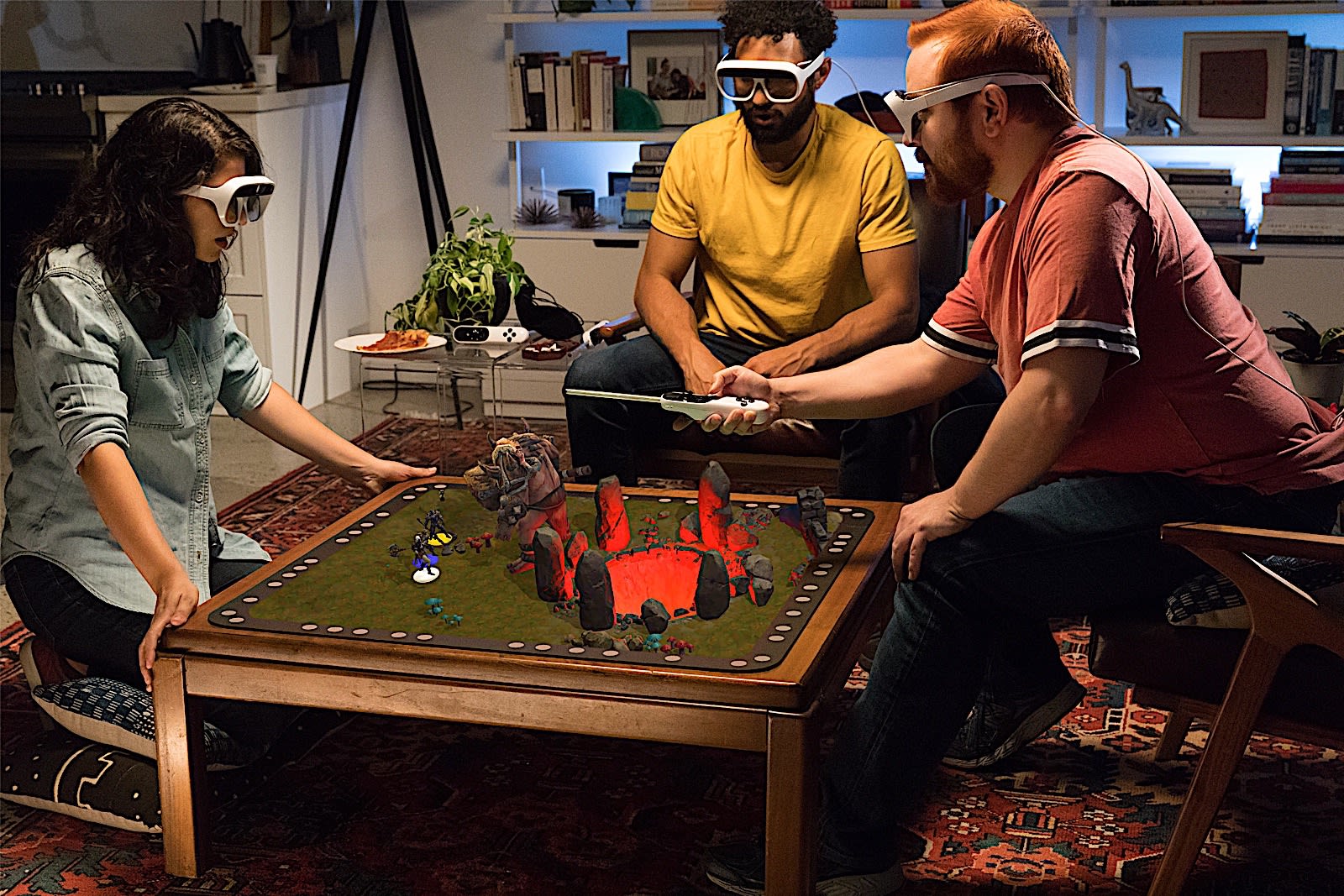
Engadget RSS Feed
Time’s mixed reality app takes you inside the Amazon rainforest

Engadget RSS Feed
Fable’s ‘Wolves in the Walls’ VR is about more than virtual reality

Engadget RSS Feed


Recommended Reading: The reality of sci-fi’s AI immortality obsession
 Are Hosts, Replicants, and robot clones closer than we think? Jayson Greene, The Ringer Black Mirror already uncomfortably aligns with the real world, but we might be even closer to more advanced concepts from that show and others, like Westworld…
Are Hosts, Replicants, and robot clones closer than we think? Jayson Greene, The Ringer Black Mirror already uncomfortably aligns with the real world, but we might be even closer to more advanced concepts from that show and others, like Westworld…
Engadget RSS Feed

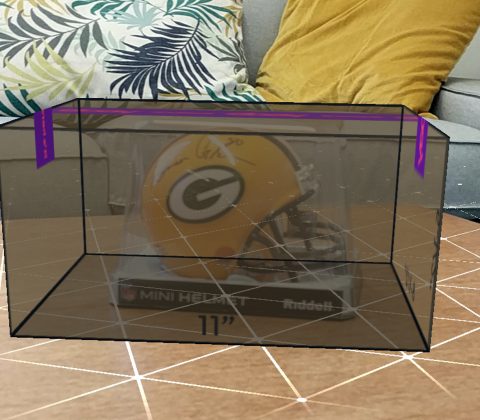
eBay uses augmented reality to help you pick packaging
 It can be a pain to sell your gear on eBay for many reasons, not the least of which is packaging. How do you know a box will be large enough without having it on hand? eBay can help: it just launched a previously teased, ARCore-based augmented realit…
It can be a pain to sell your gear on eBay for many reasons, not the least of which is packaging. How do you know a box will be large enough without having it on hand? eBay can help: it just launched a previously teased, ARCore-based augmented realit…
Engadget RSS Feed
The UK’s spaceport ambitions inch closer to reality
 The UK government's goal to play host to the first spaceport in Europe is taking a baby step closer to fruition today. After being introduced just over a year ago as the Draft Spaceflight Bill, the rebranded Space Industry Bill is receiving royal ass…
The UK government's goal to play host to the first spaceport in Europe is taking a baby step closer to fruition today. After being introduced just over a year ago as the Draft Spaceflight Bill, the rebranded Space Industry Bill is receiving royal ass…
Engadget RSS Feed
Vive Focus pegged as HTC’s standalone Daydream virtual reality headset
The HTC Vive was a virtual reality collaboration project between Valve and HTC. It’s expensive, though, running $ 599 even after the most recent price cut. It also doesn’t work without a beefy computer rig to actually handle the heavy lifting. The next big development in VR, therefore, should be a headset that doesn’t need a […]
Come comment on this article: Vive Focus pegged as HTC’s standalone Daydream virtual reality headset
Your Samsung Galaxy S8 now works with the Daydream View for all things virtual reality
The 2017 flagship from Samsung finally works with Daydream, which is Google’s virtual reality platform. Move over, Oculus. Samsung is partnering with someone else to serve up immersive content on its phones. The plan to add the Galaxy S8 to the Daydream-ready family was put into motion at Google I/O 2017 in May. Now it’s […]
Come comment on this article: Your Samsung Galaxy S8 now works with the Daydream View for all things virtual reality
Virtual reality could help elderly people avoid potentially fatal falls
Researchers have been investigating whether VR tech could be used to help prevent falls among the elderly and people with neurodegenerative conditions. Here’s what they’re busy planning.
The post Virtual reality could help elderly people avoid potentially fatal falls appeared first on Digital Trends.
Here are the flat-out craziest virtual reality demos we saw at Mobile World Congress
You might not necessarily think of virtual reality as phone tech, but it nonetheless was out in full force at Mobile World Congress in Barcelona. We sought out the best the show had to offer.
The post Here are the flat-out craziest virtual reality demos we saw at Mobile World Congress appeared first on Digital Trends.
Augment your reality with the best Project Tango apps and games
Project Tango, Google’s augmented reality platform for smartphones and tablets, is in its infancy. But there are already a number of great games and apps for the burgeoning hardware.
The post Augment your reality with the best Project Tango apps and games appeared first on Digital Trends.
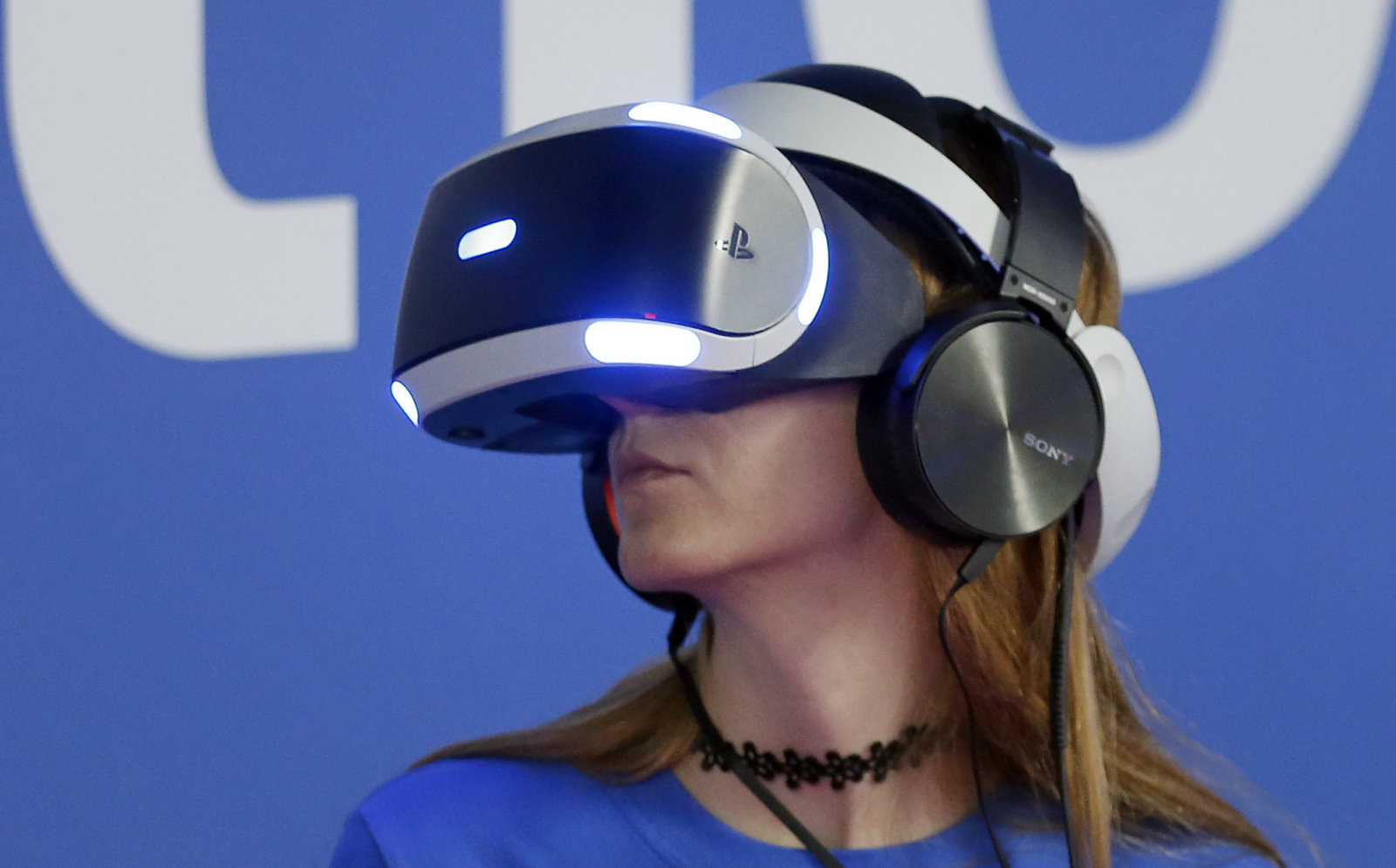
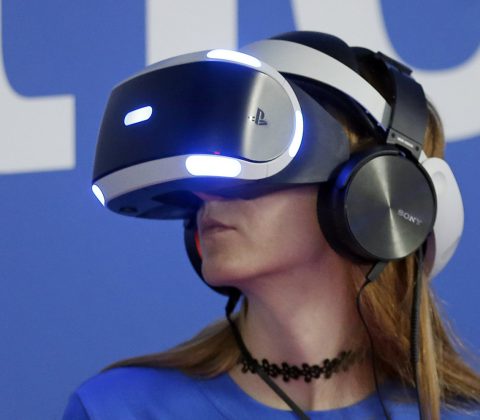
Virtual reality content startup Jaunt lands on PlayStation VR
 The PlayStation VR just got some additional content via the recently announced app launch by Jaunt. The platform will have instant access to 150 cinematic titles from the startup. The app includes videos like the award-winning animation Invasion, CBS…
The PlayStation VR just got some additional content via the recently announced app launch by Jaunt. The platform will have instant access to 150 cinematic titles from the startup. The app includes videos like the award-winning animation Invasion, CBS…
Engadget RSS Feed
HTC invests in transparent optical display maker for augmented reality
HTC and Quanta Computer recently made a huge investment in Lumus, a maker of transparent optical screens for augmented reality-based glasses. The screens are based on the Lumus Optical Engine that blends digital and physical worlds.
The post HTC invests in transparent optical display maker for augmented reality appeared first on Digital Trends.
How the UN thinks virtual reality could not only build empathy, but catalyze change, too
Technology is hoping to turn empathy into action. Or at least, the United Nations is hoping to do so. The intergovernmental organization is 71 at this point, but it’s constantly finding new ways to better the world’s citizenry.
The post How the UN thinks virtual reality could not only build empathy, but catalyze change, too appeared first on Digital Trends.
Xiaomi announces the Mi VR Play, a virtual reality headset for your smartphone
Xiaomi’s taken the wraps off the Mi VR Play, a smartphone-powered headset made of stretchable Lycra material. It’s available to select “beta testers” now, with general availability to follow in the future.
The post Xiaomi announces the Mi VR Play, a virtual reality headset for your smartphone appeared first on Digital Trends.
Mercedes’ Rescue Assist app uses augmented reality to aid first responders
The Mercedes-Benz Rescue Assist app uses augmented reality to let first responders see inside vehicles and plot the best way to rescue occupants. 3D models of vehicles show things like fuel lines and high-voltage wiring.
The post Mercedes’ Rescue Assist app uses augmented reality to aid first responders appeared first on Digital Trends.
This proposed drone taxi service just took a big step toward becoming a reality
EHang’s cool 184 passenger drone has just received permission to carry out flight tests in Nevada, bringing the possibility of a drone taxi service another step closer.
The post This proposed drone taxi service just took a big step toward becoming a reality appeared first on Digital Trends.
Check your email in augmented reality with the new Outlook Hololens app
Untethering humans from the displays on smartphones, tablets and computers could well be the biggest impact of augmented reality technology like Hololens, and access to Outlook Mail and Calendar apps is one of the first steps in that direction.
The post Check your email in augmented reality with the new Outlook Hololens app appeared first on Digital Trends.
Samsung shows off 4K screens for virtual reality displays
4K displays in a virtual reality headset might happen sooner than you think. Samsung has shown off an ultra HD screen that’s intended to be used in VR applications, which should offer a considerable bump in quality and pixels over what we’re using in headsets right now. The display itself was a 5.5-inch screen with […]
Come comment on this article: Samsung shows off 4K screens for virtual reality displays
You can now go shopping inside a virtual reality department store
Say hello to what eBay is calling the world’s first virtual reality department store, which allows eager customers to browse through collections like clothing, electronics, and home goods as though you were actually, well, in the store.
The post You can now go shopping inside a virtual reality department store appeared first on Digital Trends.
We tried on an augmented reality dinosaur t-shirt, and it was awesome
Dinosaurs are cool, and although VR is getting all the attention, AR (augmented reality) can be cool too. Put the two together and you get this amazing AR-enhanced dinosaur t-shirt that you’ll want to wear right now, regardless of your age.
The post We tried on an augmented reality dinosaur t-shirt, and it was awesome appeared first on Digital Trends.
One step closer to reality: introducing 360-degree live streaming and spatial audio on YouTube
Growing up as a kid, my favorite basketball player was Magic Johnson. I wanted nothing more than to be able to watch him play in person, but unfortunately I never got the chance. Whether it’s a sporting event or a concert or even a family gathering, all of us have had the feeling of wanting to be somewhere we couldn’t. But these days, virtual reality and 360-degree video can help get you one step closer to actually being at those places and in those moments. Today, we’re taking immersive video even further with 360-degree live streaming on YouTube.
We first launched support for 360-degree videos back in March 2015. From musicians to athletes to brands, creators have done some incredible things with this technology. Now, they’ll be able to do even more to bring fans directly into their world, with 360-degree live streaming. And after years of live streaming Coachella for fans around the world who can’t attend the festival, this year we’re bringing you the festival like never before by live streaming select artist performances in 360 degrees this weekend.
Starting today, we’re also launching spatial audio for on-demand YouTube videos. Just as watching a concert in 360 degrees can give you an unmatched immersive experience, spatial audio allows you to listen along as you do in real life, where depth, distance and intensity all play a role. Try out this playlist on your Android device.
To make sure all creators can tell awesome stories with virtual reality, we’ve been working with companies across the industry. We’re working with companies like VideoStitch and Two Big Ears to make their software compatible with 360-degree live streams or spatial audio on YouTube and more will be available soon. We’ll also make 360-degree live streaming and spatial audio technologies available at all YouTube Space locations around the globe, so you can take it for a spin.
What excites me most about 360-degree storytelling is that it lets us open up the world’s experiences to everyone. Students can now experience news events in the classroom as they unfold. Travelers can experience faraway sites and explorers can deep-sea dive, all without the physical constraints of the real world. And today’s kids dreaming of going to a basketball game or a concert can access those experiences firsthand, even if they’re far away from the court. What were once limited experiences are now available to anyone, anywhere, at any time.
Are you ready to never miss a moment again?
Neal Mohan, Chief Product Officer, recently watched “Dub360: Stephen Curry pregame warmup routine.”
11 incredible headsets that are making the virtual a reality
There’s a wave of new entries in the virtual reality race. Could the long-awaited promise of VR finally be here? We take a look at the most promising headsets currently available, or on the horizon.
The post 11 incredible headsets that are making the virtual a reality appeared first on Digital Trends.
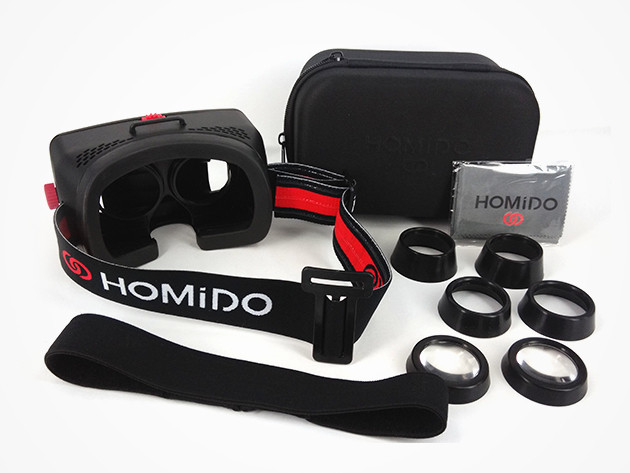
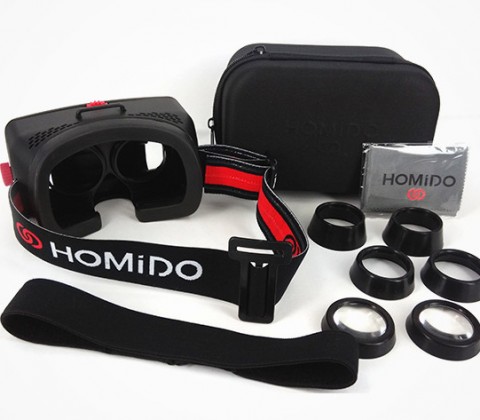
[TA Deals] Save 30% on the Homido virtual reality headset
Virtual reality has slowly been on the rise in recent years, but now it seems to finally have become mainstream. Brands big and small are attempting to get a headset on your face, allowing you to watch video and play games in an immersive way. The pricing of capable headsets, though, is pretty high if you want to get one of good quality. But we are currently offering the Homido virtual reality headset on Talk Android Deals with savings that make it a worthwhile consideration.
Here’s what you need to know about the Homido:
- Screen size compatibility
- Greater than 4 inches
- Less than 5.7 inches
- Screen resolution support
- Optimal: Full HD (1920×1080) or higher
- Compatible: HD (1280×720)
- Limited: 800×480
- Operating system support
- Optimal: Android, iOS
- Compatible/Limited: Windows Phone
Forget about paying the usual $ 100 price for the Homido because we’ve knocked 30% from that price. So you can bring home an impressive virtual reality headset for less than $ 70 with free shipping. Included with the Homido is one pair of lenses, three pairs of lens holders for different sights, a soft case for storing, and a strap. You’re getting everything you need to immerse yourself in 360-degree experiences. Upon ordering, you can expect your Homido virtual reality headset to be delivered November 13-20.
Click here to view the embedded video.
Come comment on this article: [TA Deals] Save 30% on the Homido virtual reality headset
YouTube presses play on virtual reality
If we’ve learned anything in the past 10+ years at YouTube it’s that capturing and sharing videos is a great way to bring people there with you—whether “there” is an Icelandic glacier, a special performance by violinist Tim Fain, or just a friend’s birthday party.
Virtual reality (VR) makes the experience of being there even more awesome and immersive, so today we’re bringing two new VR features to YouTube’s Android app. All you need is your current phone, and a Google Cardboard viewer.
First, YouTube now supports VR video—a brand new kind of video that makes you feel like you’re actually there. Using the same tricks that we humans use to see the world, VR video gives you a sense of depth as you look around in every direction. Near things look near, far things look far. So if you were excited about 360° videos, this is pretty freakin’ cool.
To give it a try just find a VR video on YouTube—like the Hunger Games Experience or TOMS Shoes Giving Trip—tap the new Cardboard icon, drop your phone into your Cardboard viewer, and you’re off! If you’re a creator, you can also check out technologies like Jump to capture and share your own VR videos.
Our second bit of news is for the universe of existing YouTube content. And that’s the fact that you can now watch any video using Google Cardboard, and experience a kind of virtual movie theater. Just select the new “Cardboard” option from the watch page menu, drop your phone into your viewer, and you’re done. You’ll now have the largest VR content library right at your fingertips.
Both of today’s updates make it easier to be there. In some cases, really there there. So download the new YouTube app from Google Play, and get going.
Kurt Wilms, Senior Product Manager, YouTube VR recently watched “Waves of Grace”, Sanjeev Verma, YouTube Product Manager, recently watched “LA Phil: The Orchestra VR Video Experience” and Husain Bengali, Product Manager, Jump recently watched “Apollo 11 moon landing.
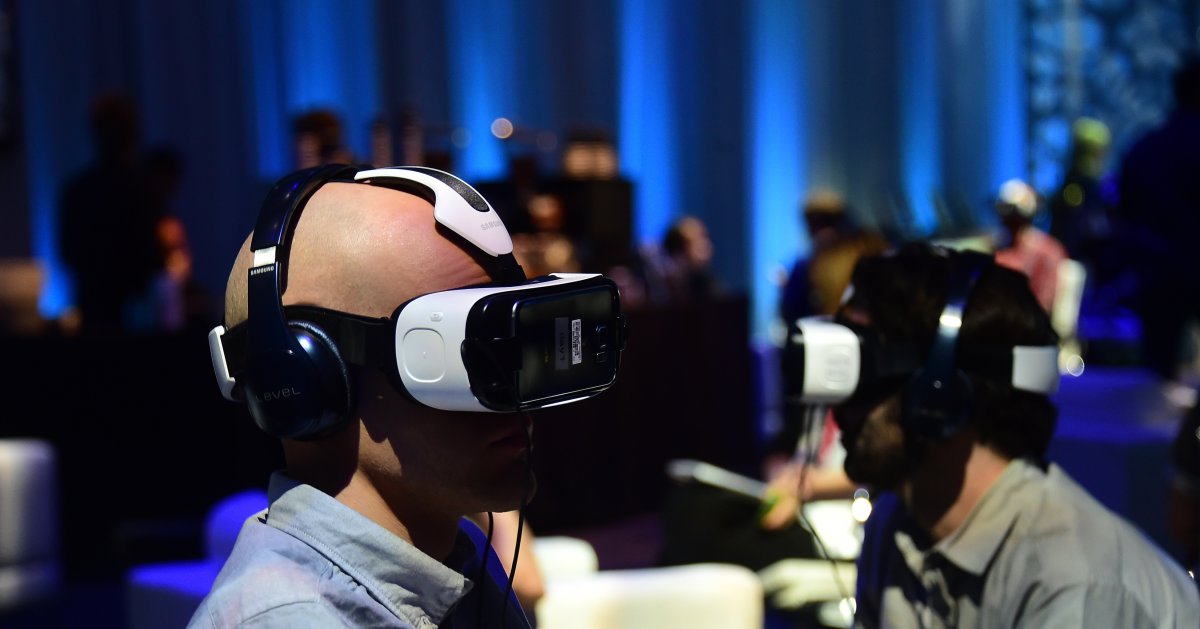
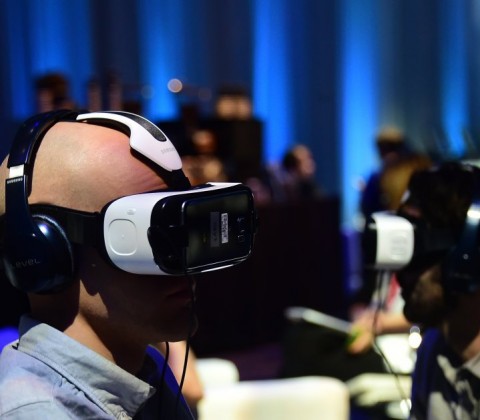
How Netflix works in virtual reality, and why it’s not HD
 It's true, the Netflix VR app is ready for your compatible* Samsung phone and Gear VR headset (if you don't see it, try uninstalling and reinstalling the Oculus app), and has a virtual living room for you to chill in. Oculus CTO John Carmack worked…
It's true, the Netflix VR app is ready for your compatible* Samsung phone and Gear VR headset (if you don't see it, try uninstalling and reinstalling the Oculus app), and has a virtual living room for you to chill in. Oculus CTO John Carmack worked…
Engadget RSS Feed

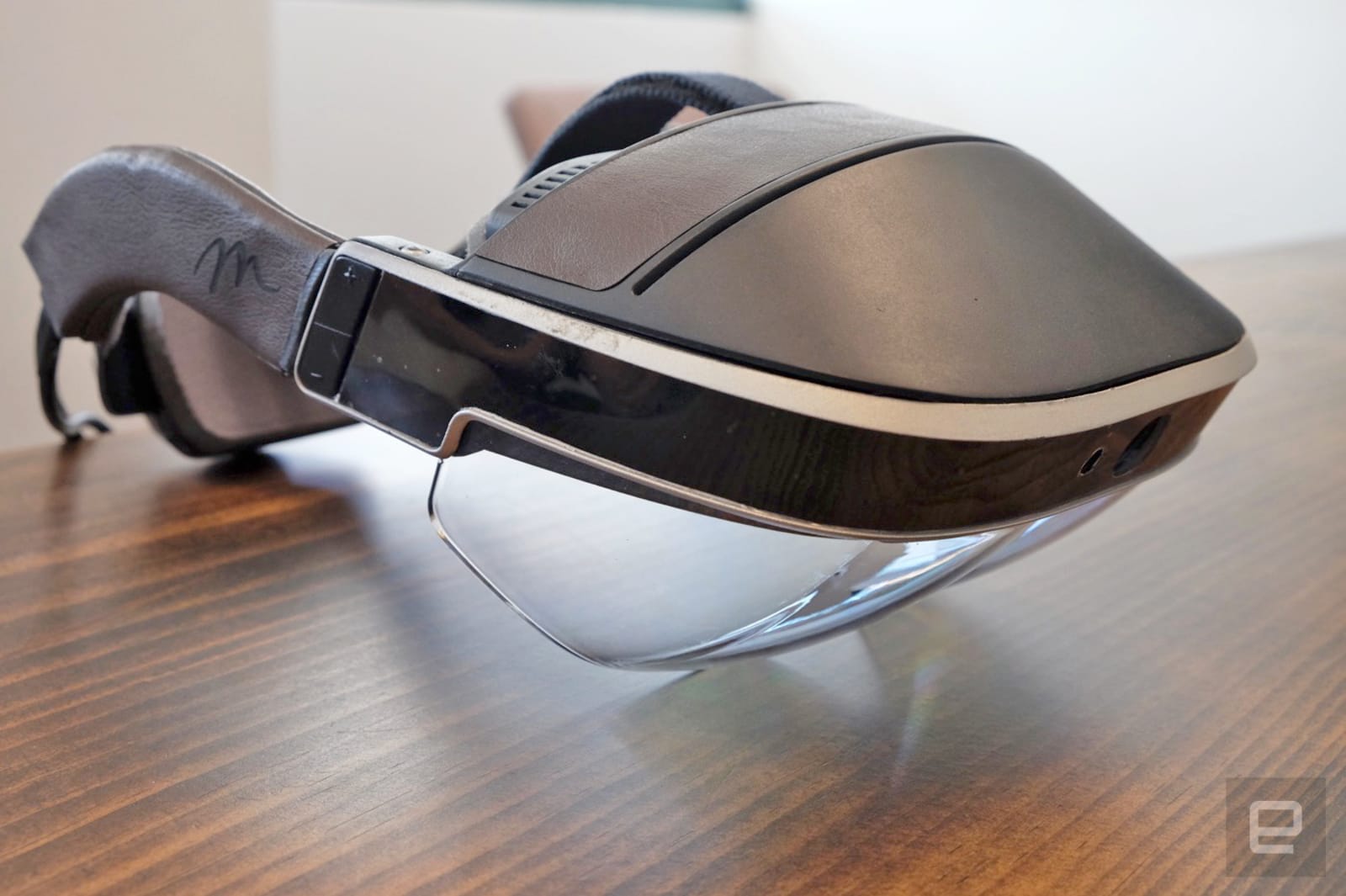 After a promising start, AR startup Meta's assets have been sold to an unknown buyer, reports TechCrunch and other sites. Meta fell on hard times in September after a promised $ 20 million investment from a Chinese company fell through over trade tens…
After a promising start, AR startup Meta's assets have been sold to an unknown buyer, reports TechCrunch and other sites. Meta fell on hard times in September after a promised $ 20 million investment from a Chinese company fell through over trade tens…